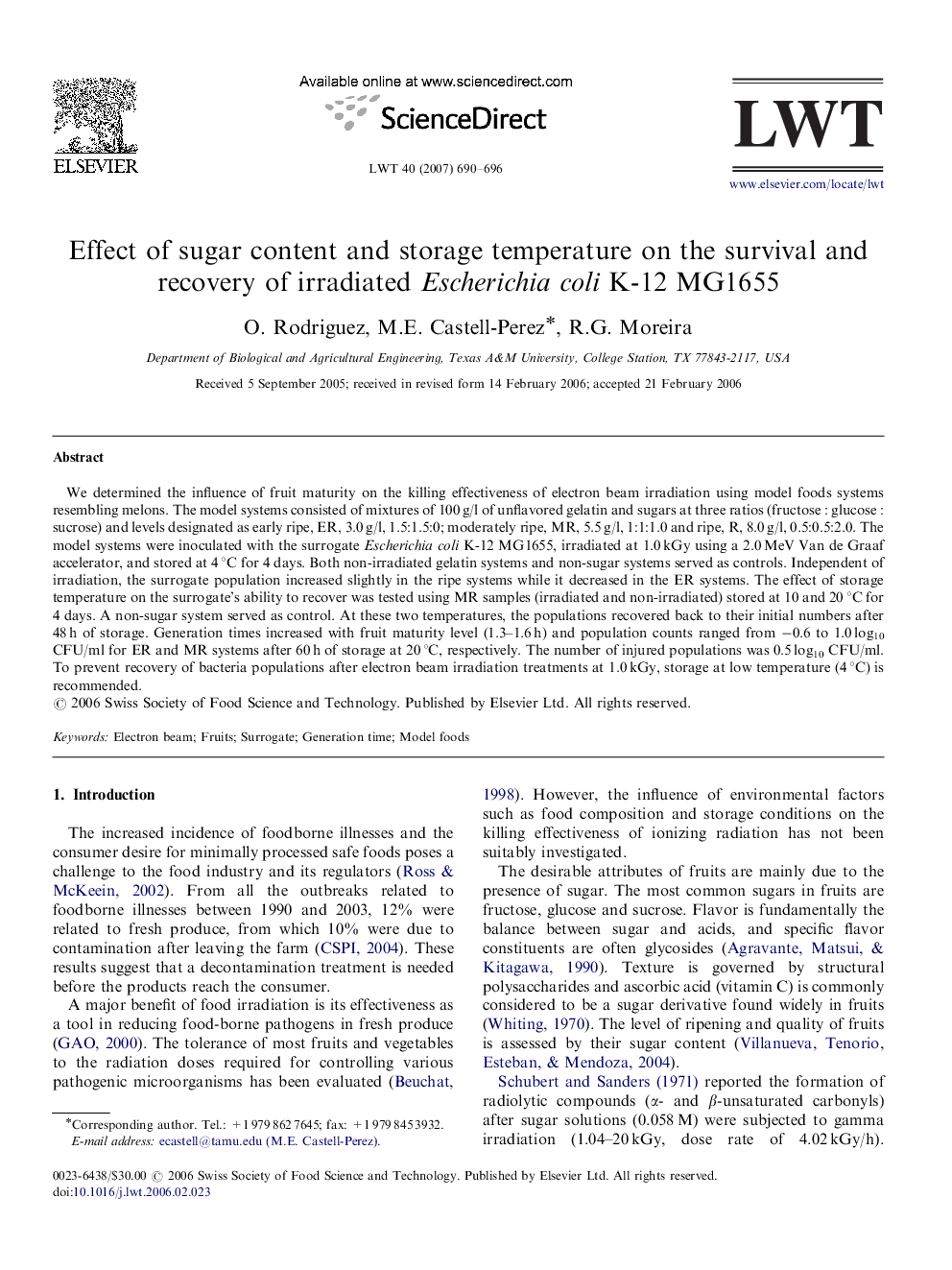| Article ID | Journal | Published Year | Pages | File Type |
|---|---|---|---|---|
| 4565504 | LWT - Food Science and Technology | 2007 | 7 Pages |
We determined the influence of fruit maturity on the killing effectiveness of electron beam irradiation using model foods systems resembling melons. The model systems consisted of mixtures of 100 g/l of unflavored gelatin and sugars at three ratios (fructose : glucose : sucrose) and levels designated as early ripe, ER, 3.0 g/l, 1.5:1.5:0; moderately ripe, MR, 5.5 g/l, 1:1:1.0 and ripe, R, 8.0 g/l, 0.5:0.5:2.0. The model systems were inoculated with the surrogate Escherichia coli K-12 MG1655, irradiated at 1.0 kGy using a 2.0 MeV Van de Graaf accelerator, and stored at 4 °C for 4 days. Both non-irradiated gelatin systems and non-sugar systems served as controls. Independent of irradiation, the surrogate population increased slightly in the ripe systems while it decreased in the ER systems. The effect of storage temperature on the surrogate's ability to recover was tested using MR samples (irradiated and non-irradiated) stored at 10 and 20 °C for 4 days. A non-sugar system served as control. At these two temperatures, the populations recovered back to their initial numbers after 48 h of storage. Generation times increased with fruit maturity level (1.3–1.6 h) and population counts ranged from −0.6 to 1.0 log10 CFU/ml for ER and MR systems after 60 h of storage at 20 °C, respectively. The number of injured populations was 0.5 log10 CFU/ml. To prevent recovery of bacteria populations after electron beam irradiation treatments at 1.0 kGy, storage at low temperature (4 °C) is recommended.
